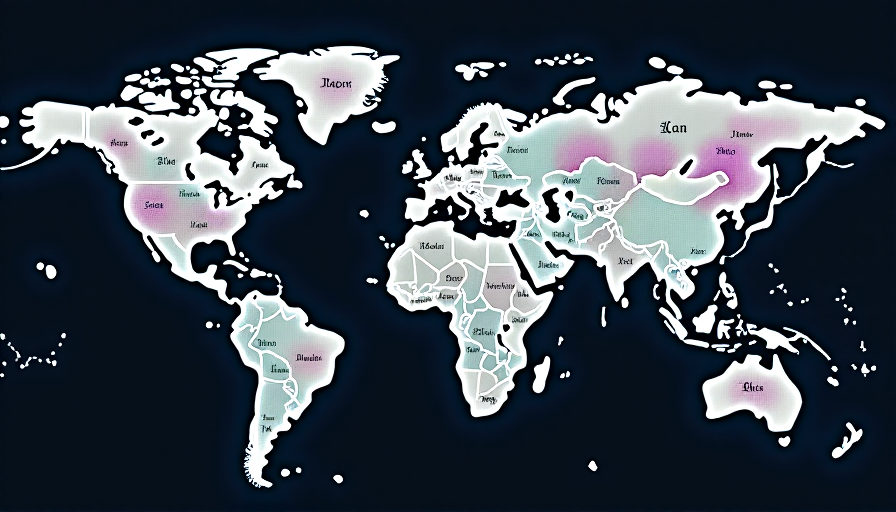
Bridging the Digital Divide for Lower-Resourced Languages
Technology has become an everyday companion for millions, yet for speakers of many languages, this relationship is far from seamless. While devices immediately understand English, French, Portuguese, and several other widely spoken languages, users of tongues like Tigrinya, Mongolian, Shanghainese, or Kurdish often find their digital experiences limited or cumbersome.
The Challenge of Digital Exclusion
Out of roughly 7,000 languages spoken around the world, only 50 to 100 are readily supported by major operating systems and browsers. This limited coverage means that speakers of many languages face digital disadvantages. Devices, keyboards, fonts, and software often cater to a narrow group, leaving vast linguistic communities without the tools needed to engage online fully.
Stanford history professor Thomas Mullaney explained, "You do the math." His observation paints a vivid picture of an ever-widening gap, where an extensive range of languages is left trailing in the digital age.
SILICON: A Beacon of Inclusion
At the forefront of this challenge is SILICON, or the Stanford Initiative on Language Inclusion and Conservation in Old and New Media. Co-directed by Mullaney and English professor Elaine Treharne, SILICON is a collaborative effort that brings together language communities, tech innovators, international organizations like Unicode and UNESCO, and academic institutions. Its mission is simple yet profound: ensure that speakers of underrepresented languages are not left behind in the digital revolution.
SILICON’s initiatives include:
- Practitioners Program: Empowering researchers, designers, and programmers to develop inclusive digital tools.
- Internship Pathways: Bridging the gap for students in linguistics, computer science, and related fields, many with personal connections to lower-resourced languages.
- Digital Equity Datathons: Tackling issues from language encoding to broader socio-cultural challenges in education and healthcare.
Navigating Cultural Nuances
Deciding how a language should be represented digitally is a complex issue. Cultural, historical, and political factors—all of which impact language identity—play a critical role. Diyi Yang, an assistant professor specializing in socially aware language technologies, noted that while equal digital access is desirable, not every community might want their language to be documented in the same way. These decisions, steeped in local history and sentiment, must be led by the language speakers themselves.
Mullaney further illustrated the importance of digital inclusivity with real-world implications. Consider telehealth services in remote villages: a user cannot book a doctor’s appointment if their phone is unable to process their native language. The same holds true for online education, e-commerce, and much more. In essence, digital access is intertwined with quality of life.
The Role of Emerging Technologies
The rapid development of artificial intelligence has further spotlighted this digital divide. As AI models are trained on vast datasets, the lack of digital resources in many languages becomes more pronounced. Rishi Bommasani, a PhD candidate and Society Lead at Stanford HAI’s Center for Research on Foundation Models, emphasized that AI, while offering new capabilities, might widen the gap between well-resourced and lower-resourced languages. This “chicken and egg” dilemma means that without enough digital text, developing the sophisticated tools required for these languages remains challenging.
For instance, scholars like Helena Aytenfisu and Emiyare Cyril Ikwut-Ukwa are working on refining tools that assist in inputting locale-specific data. Yet, as the scale of ‘big data’ grows, reaching up to trillions of words, the compounded effect of data scarcity becomes harder to overcome.
Preserving Our Linguistic Heritage
Beyond functional digital access, the preservation of languages carries profound cultural implications. Mullaney likened every language to a unique philosophy of life—a “fully functional theory of everything.” Without efforts to capture and nurture these languages, much of the world’s cultural richness is at risk of being lost forever.
The debate now centers on whether language preservation should be a static archival task or a dynamic everyday inclusion strategy. The choice will determine whether these languages remain vibrant and alive in digital spaces or fade away into obscurity.
Looking Ahead
Through conferences, datathons, and cross-disciplinary projects, SILICON continues to build bridges between technology and language. With the combined efforts of researchers, technology developers, and language communities, a future where every speaker has equal digital access is within reach.
The challenge is as significant as it is urgent: ensuring that digital innovation benefits all languages, thus preserving the tapestry of human culture for generations to come.
For More Information
- Thomas Mullaney: Professor of History and East Asian Languages & Cultures, School of Humanities and Sciences.
- Elaine Treharne: Roberta Bowman Denning Professor of English and Comparative Literature, School of Humanities and Sciences.
- Diyi Yang: Assistant Professor of Computer Science with expertise in socially aware language technologies, School of Engineering.
Note: This publication was rewritten using AI. The content was based on the original source linked above.